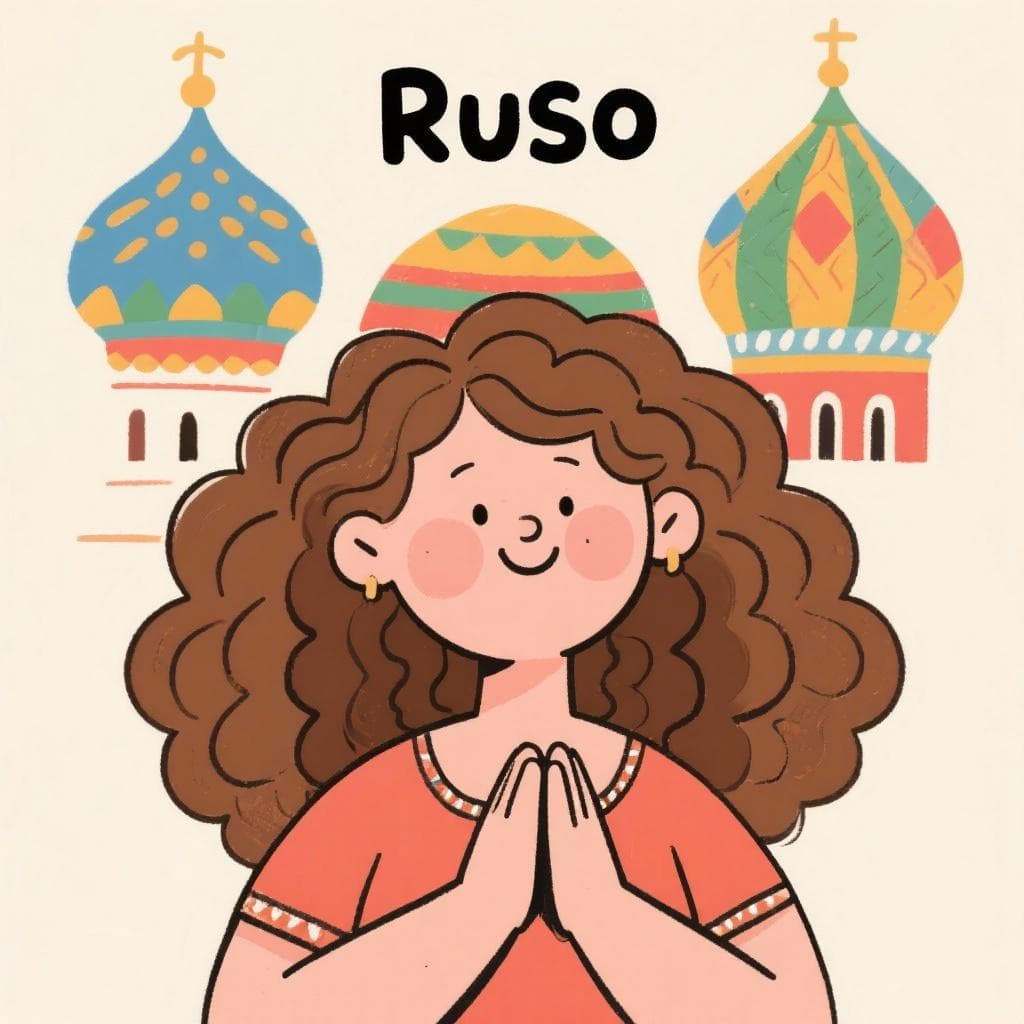Rosa Rizo reza en ruso.
RO-sa RI-so RE-sa en RU-so
Rosa Rizo prays in Russian.
🔊 Listen & Practice
Start with slow speed to master pronunciation, then gradually increase to challenge yourself.
🎨 Visualization

Rosa, with her curly hair ('rizo'), is praying in Russian. Every 'r' here is a strong roll!
🎯 Pronunciation Focus
The Rolled 'rr' at the Start of a Word
/r/This is the main event! In Spanish, any word that starts with 'r' gets the strong, rolled 'rr' sound. You make it by vibrating the tip of your tongue against the roof of your mouth, just behind your teeth. Think of a cat purring or starting a tiny engine.
The 's' and 'z' Sound (Seseo)
/s/In most of the Spanish-speaking world (all of Latin America and parts of Spain), the letters 'z' and 's' sound exactly the same: like the 's' in the English word 'sun'. So, 'Rizo' sounds like 'Riso', and 'reza' sounds like 'resa'.
📝 Practice Breakdown
Let's start strong. Focus on getting a good vibration for the 'R' in both 'Rosa' and 'Rizo'. It's the same powerful, rolled sound for both.
Keep that momentum! The 'r' in 'reza' and 'ruso' are also rolled. Try to link 'en' and 'ruso' smoothly. Remember, 'reza' sounds like 'resa'.
Key Words in This Tongue Twister:
📚 Background
This is a classic 'trabalenguas' used specifically to drill one of the most challenging sounds for non-native speakers: the rolled 'rr'. Because every key word starts with 'r', it forces you to practice the rule that an 'r' at the beginning of a word is always rolled.
❌ Common Pitfalls
Using a Soft 'r' Instead of a Rolled 'rr'
Mistake: "Pronouncing the 'R' in 'Rosa' with a single, light tap, like the 'r' in 'pero' (but)."
Correction: When 'r' is the very first letter of a word, it demands the strong, rolled 'rr' sound. You need to press the tip of your tongue near the roof of your mouth and blow air over it to make it vibrate. It's a motor, not a tap!
Buzzing the 'z'
Mistake: "Making a buzzing sound for the 'z' in 'Rizo' and 'reza', like in the English word 'zoo'."
Correction: The Spanish 'z' never buzzes. In almost all dialects, it sounds identical to an 's'. So, just think of it as saying 'Riso' and 'resa'. It simplifies things a lot!
🌎 Where It's Used
General Spanish
This tongue twister is universally known. The pronunciation of 'z' as 's' (called 'seseo') is standard in all of Latin America and southern Spain. In most of central and northern Spain, the 'z' would be pronounced like the 'th' in the English word 'thin'.
🔗 Related Tongue Twisters
The R-Roll Repetition
Say it three times in a row, focusing on making every single 'R' a clean, strong roll. Record yourself and listen back. Are all four 'r' sounds vibrating?
🏷️ Tags
Frequently Asked Questions
Why is the 'r' rolled in 'Rosa' if it's not spelled with 'rr'?
That's a fantastic question and a key rule in Spanish! If a word begins with a single 'r', it is ALWAYS pronounced with the strong, rolled 'rr' sound. You only write 'rr' when that sound appears between two vowels in the middle of a word, like in 'carro' (car).
I really can't roll my R's. What should I do?
You are not alone! It's a physical skill that takes practice. A great trick is to say the English phrase 'gotta go' very quickly. The 'tt' sound is made in the same spot as the Spanish 'r'. Start there, and try to blow air over your tongue while you do it to get it to vibrate. Be patient and have fun with it!


